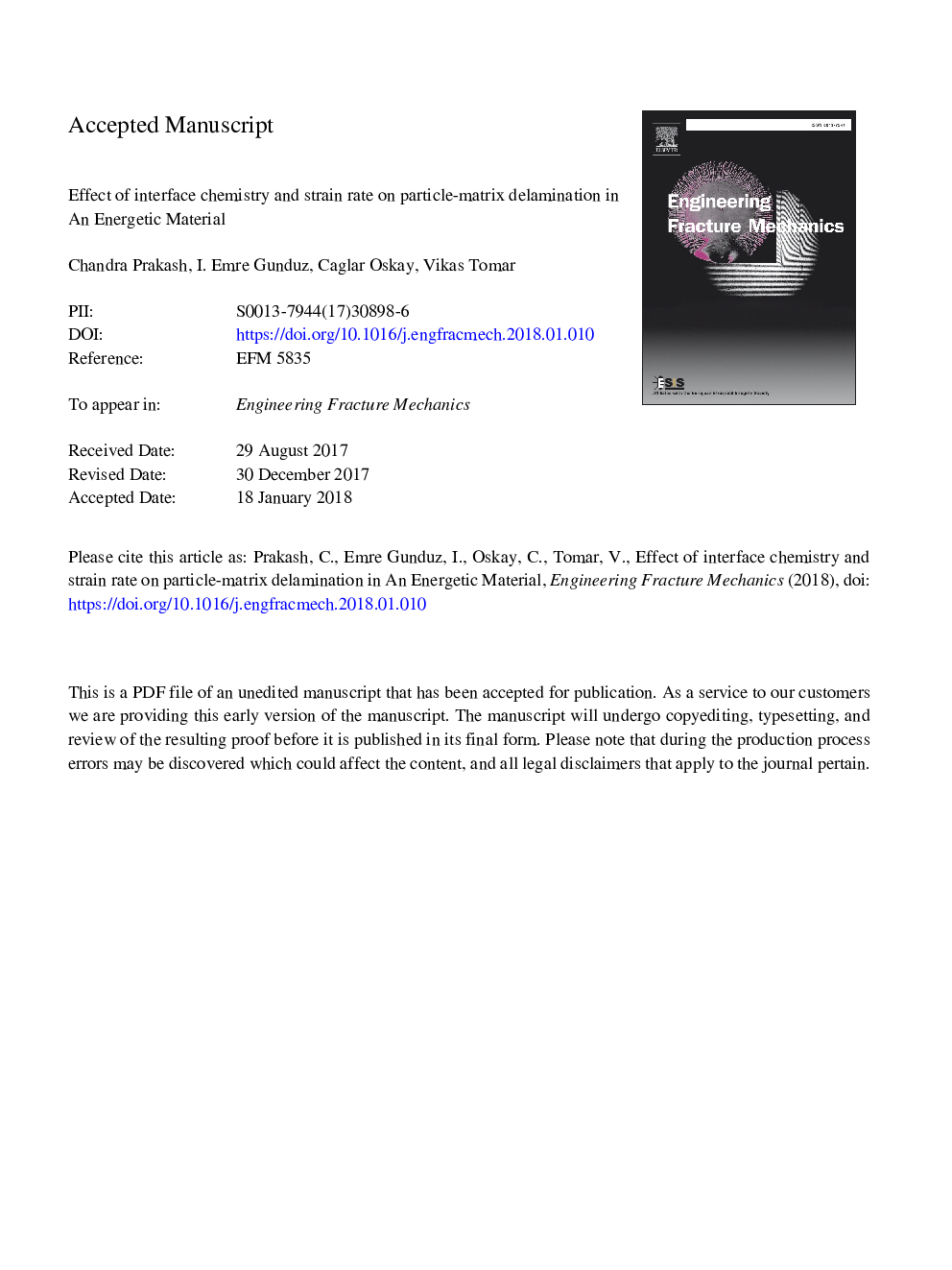| Article ID | Journal | Published Year | Pages | File Type |
|---|---|---|---|---|
| 7168999 | Engineering Fracture Mechanics | 2018 | 44 Pages |
Abstract
In this work, interface mechanical strength of a set of Hydroxyl-terminated polybutadiene (HTPB)-Ammonium Perchlorate (AP) interfaces is characterized using dynamic microscale impact experiments at strain rates up to 100â¯sâ1. The experiments were conducted on the interfaces with varying amount of binding agent Tepanol with an impacter of radius 1â¯Âµm. Measurements of strain rates and plastic-residual depths were correlated to obtain the interface level strains and stresses. A power law viscoplastic constitutive model was fitted to the stress-strain-strain rate data in order to predict rate dependent constitutive behaviors of interfaces, particle, and matrix. An in-situ mechanical Raman spectroscopy (MRS) setup was used to analyze the effect of binding agent on interface level stress variation at different temperatures. The MRS setup is also used to obtain cohesive fracture separation properties in the analyzed samples including interface delamination strength and interface fracture energy. The measured cohesive fracture parameters capture the effect of interface chemistry variation. The cohesive parameters and the viscoplastic model obtained from the experiment were implemented in a cohesive finite element scheme to simulate dynamic crack propagation as well as delamination in model energetic material samples. Results quantify influence of the rate of loading and interface binding agent variation on rate dependent fracture. Results show that the time at which the interface delamination starts increases linearly with the increase in cohesive strength and decreases exponentially with an increase in loading rate.
Related Topics
Physical Sciences and Engineering
Engineering
Mechanical Engineering
Authors
Chandra Prakash, I. Emre Gunduz, Caglar Oskay, Vikas Tomar,
